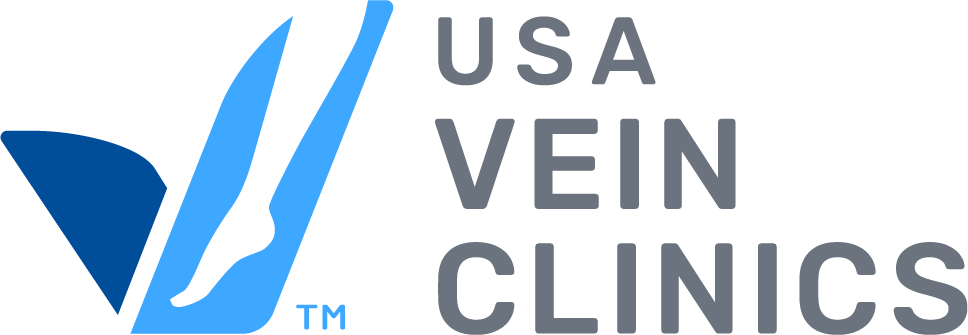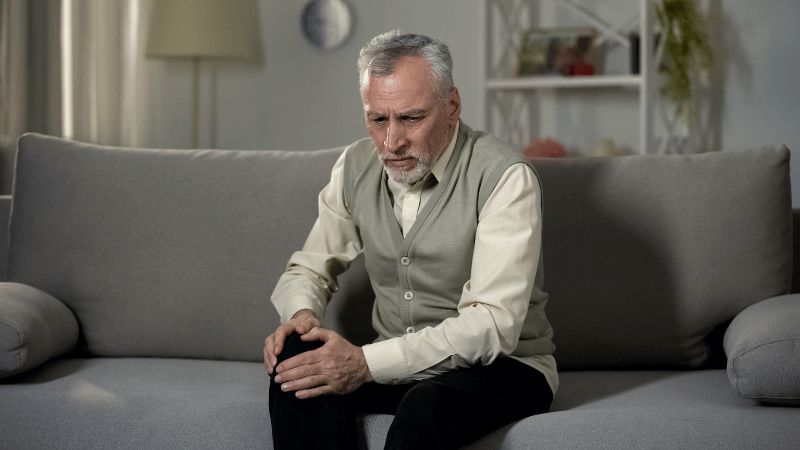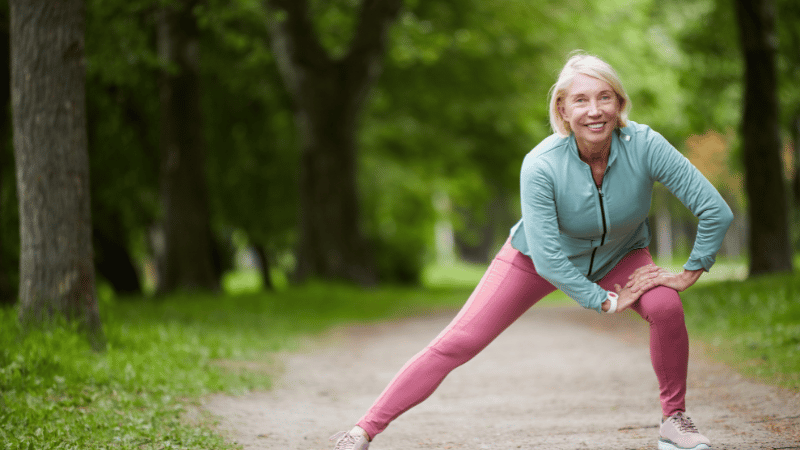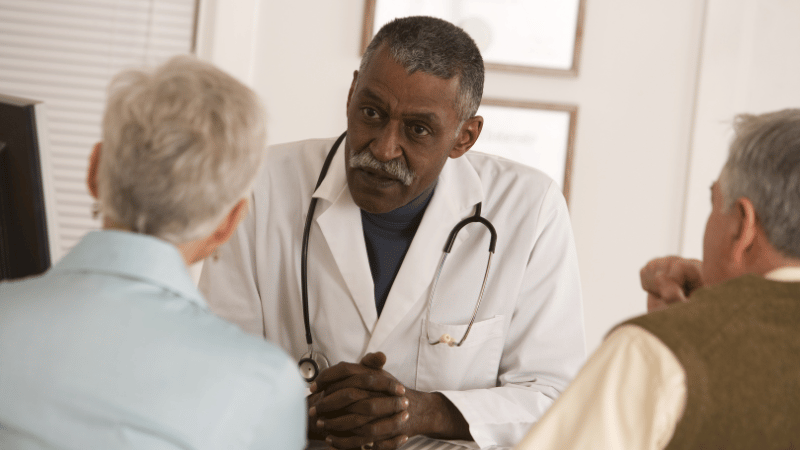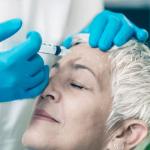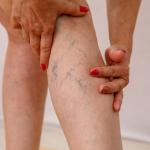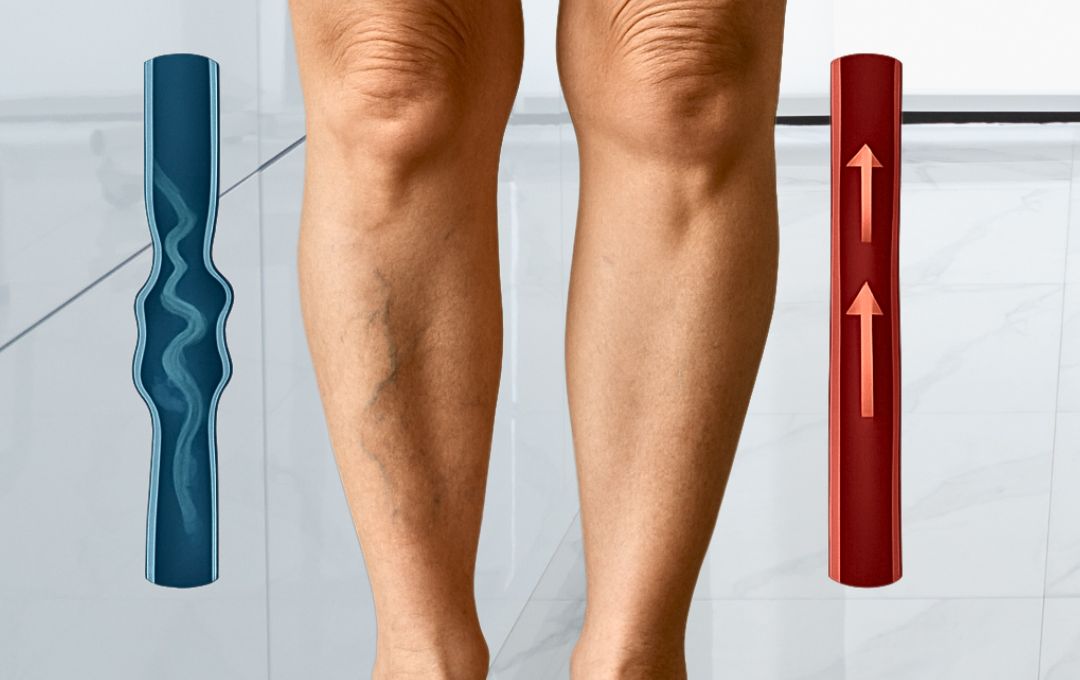
Good circulation is vital for overall health, but it plays an especially important role in the legs. When blood flow to your lower extremities is compromised, it can lead to pain, swelling, varicose veins, chronic venous insufficiency, and even more serious issues like peripheral artery disease (PAD) or deep vein thrombosis (DVT).
If you’ve ever experienced heavy legs, tingling feet, or leg cramps—especially after standing or sitting for long periods—you’re not alone. Poor circulation in the legs is a common issue, however there are practical ways to improve it. Let’s explore what causes poor circulation and how you can boost blood flow effectively.
Leg Cramps? Take Our Symptoms Quiz
Why is Leg Circulation Important?
Circulation refers to blood movement throughout the body, controlled by the heart and circulatory system. The heart pumps blood, and a network of vessels carries it through the body and back to the heart. When veins are damaged or weakened, they can’t carry blood effectively, leading to poor circulation.
Improving the circulation and blood flow in your legs is important because good blood circulation supports faster healing, a stronger heart, mental sharpness, and healthier-looking skin. Poor circulation can lead to complications that can take longer to recover from or not at all.
What Causes Poor Leg Circulation?
Poor leg circulation is a condition that affects millions of American adults. Several potential underlying factors have been linked to poor leg circulation, including:
- Chronic Venous Insufficiency: CVI is a medical term for vein disease. It occurs when the valves in veins are damaged, disrupting blood flow. The result is blood pooling in the legs, spider veins, and varicose veins.
- Varicose Veins: These are twisted and enlarged veins bulging underneath the skin. They can look as if there’s rope inside your leg and may be painful while walking.
- Blood Clots: A blood clot can form when blood vessels are damaged. Some blood clots, such as deep vein thrombosis, can be potentially deadly.
- Diabetes: High blood sugar levels due to diabetes can damage blood vessels, impacting circulation.
- Excess Weight: An inactive lifestyle, unhealthy eating habits, and being overweight can put pressure on veins and damage the valves.
Symptoms & Signs of Poor Circulation In The Legs
A person with symptoms of poor circulation may notice the following sensations:
- Leg heaviness
- Swelling in the feet, ankles, and lower legs
- Foot pain
- Numbness or tingling in the feet
- Muscle cramping in the legs and feet
- Cold feet
If you’re experiencing any of these symptoms, schedule an appointment with a vein specialist. Vein specialists can determine if your symptoms are linked to vein disease.
Schedule Your Appointment Here
6 Tips for How to Increase Blood Circulation in Your Legs
Healthy leg circulation improves mobility, especially when dealing with varicose veins or other vein diseases. Poor circulation can lead to discomfort, pain, and even more serious complications.
Seeking treatment from a healthcare professional is vital for improving blood flow. This treatment, often combined with lifestyle changes like regular exercise, wearing compression stockings, and managing stress, can significantly impact your circulatory health. Addressing vein issues proactively can alleviate symptoms, prevent further damage, and improve overall quality of life by promoting better leg circulation.
1. Walk Daily
Daily walks are linked with improved blood flow and increased leg muscle contractions. Walking at any pace for at least 20 minutes daily can help improve circulation. As muscles contract and relax, they squeeze around the large veins in the legs, pushing blood back toward the heart. Additional health benefits, such as lowered blood pressure, are also associated with daily walks.
2. Stretching and Exercise
Stretching can promote circulation and prevent stiffness. Stretching the legs expands blood vessels, allowing blood flow throughout the body. Studies have suggested that practicing stretching through yoga can improve blood flow.
Additionally, cardiovascular exercise, such as walking, biking, or swimming, is another key way to increase blood circulation in the legs.
3. Body Positions for Better Blood Flow
The way you sit or lie down can significantly impact blood circulation. Adjusting your body position can help promote better circulation, particularly in the legs.
- Best Sitting Position: Sit flat on the floor and avoid crossing your legs, which can restrict blood flow.
- Best Lying Position: Elevate the legs using a pillow, stool, or footrest. Raising the legs above the heart level encourages blood flow back toward the heart, reducing pressure on the veins.
4. Wear Compression Stockings
Compression stockings can stimulate blood flow and reduce swelling and pain in the legs and feet. Wearing compression stockings is particularly helpful if you have a job requiring you to sit or stand for long periods. They are even prescribed after a vein treatment to promote healing. However, compression stockings are not for everyone. Talk with a vein specialist to determine whether compression stockings are right for you.
5. Manage Your Stress Levels
Stress levels can affect blood pressure, leading to poor circulation by damaging vein walls. To manage stress, try tips such as:
- Mediation
- Deep breathing
- Exercise
- Healthy lifestyle choices
6. Eat a Balanced Diet
There is a link between diet and circulation. Making heart-healthy food choices can help improve circulation. Learn more about the best foods for circulation.
Reasons to Improve Leg Circulation in Legs
Improving circulation in your legs offers numerous health benefits, including:
- Improved heart and overall health.
- Lowered risk of ulcers, blood clots, and other complications.
- Reduction of symptoms such as pain and swelling.
While lifestyle changes and at-home or natural remedies can help improve circulation and alleviate symptoms, they do not fully resolve poor circulation. Seeking treatment from a specialist is essential for long-term results.
USA Vein Clinics’ experienced doctors specialize in diagnosing the cause of poor circulation and offer personalized treatment plans that effectively reduce symptoms and boost circulation. Schedule a consultation today by calling 888.768.3467 or using our online scheduling tool.
When Should You See a Doctor for Leg Circulation?
If you experience symptoms of poor circulation in the legs, such as leg pain, swelling, cramps, or restless legs, it may be a sign of chronic venous insufficiency (CVI).
Symptoms of CVI, such as varicose veins or spider veins, shouldn’t be ignored. The longer you wait to get treated, the more likely you may develop complications. These complications include deep vein thrombosis or venous ulcers. Venous ulcers are leg wounds that take longer than a couple of weeks to heal, increasing your risk of dangerous infections. To prevent unwanted complications and improve symptoms, schedule an appointment with a vein specialist or call 888.768.3467.
How to Fix Poor Leg Circulation at USA Vein Clinics
The best fix for poor leg circulation depends on diagnosis and the severity of vein disease, the size and location of affected veins, and individual health factors that influence overall well-being. A vein doctor will examine your symptoms and recommend the best treatment to help improve leg circulation in your legs.
USA Veins Clinics specializes in non-invasive vein disease treatments designed to effectively improve leg circulation and address vein-related issues, including:
- Endovenous Laser Vein Treatment: A laser collapses and seals veins during this treatment.
- Radiofrequency Ablation: Heat is used to close and treat damaged veins in this treatment.
- ClariVein®: This treatment uses a rotating fiber device to close damaged veins.
- Varithena: Uses a device to create a vein-filling foam to reroute blood to healthy veins.
- Ultrasound-Guided Sclerotherapy: A solution is injected to collapse damaged veins.
- VenaSeal™: A medical adhesive is injected into the veins during this treatment.
- Sclerotherapy: This treatment uses an injected solution to close veins.
Take Control of Your Vein Health
Maintaining a healthy blood flow is important to avoid complications of poor circulation. By choosing to receive treatment at USA Vein Clinics, patients can reap the benefits such as:
Quick and convenient care: USA Vein Clinics operates in over 168 locations nationwide and performs minimally invasive treatments that are shorter with quicker recovery times than surgical procedures.
Reduced symptoms: All treatments offered at USA Vein Clinics are FDA-approved and effective in reducing painful symptoms of varicose and spider veins.
Free insurance verification: When patients schedule their appointments, USA Vein Clinics will verify their insurance to ensure their treatment is covered and counts toward the patient’s health insurance deductible. Most insurance plans, including Medicare and some Medicaid programs, generally cover vein treatment.
Reduced risks of complications: Treatment can reduce patients’ risks of complications. Some studies suggest that varicose veins could affect the heart. Other studies have noted a connection between impaired blood flow and risk of dementia.
At USA Vein Clinics, we understand the importance of good leg circulation and offer a range of vein treatments tailored to improve it. By seeking treatment with us, you’re not just addressing leg discomfort; you’re taking a significant step towards better health for your entire body.
Schedule a consultation today to explore how our treatments can benefit your circulatory health and overall well-being. You can also find a nearby vein clinic location by entering your zip code below.
FAQs
How Can I Tell If I Have Poor Circulation in My Legs?
People experiencing poor circulation in the legs will often notice symptoms such as leg swelling, leg pain, leg heaviness, and the development of varicose veins.
Can Poor Circulation in Legs Be Reversed?
Poor circulation in legs cannot be reversed, but several treatment options can help restore vein health and improve circulation.
What is the best vitamin to improve leg circulation?
Specific vitamins, such as vitamins D, B, E, C, and K, can help improve circulation.
Can dehydration affect circulation in the legs?
Dehydration can make blood thicker, leading to poor circulation in the legs. Additionally, dehydration weakens muscles. Weak muscles cannot circulate blood through the body as effectively.
Medically Reviewed By:
Dr. Yan Katsnelson is a philanthropist, business owner, and highly skilled cardiac surgeon. He is the Founder and CEO of USA Vein Clinics, which is part of USA Clinics Group, the parent company of USA Fibroid Centers, USA Vascular Centers, and USA Oncology Centers, with more than 100 facilities nationwide. Dr. Yan has established himself as a strong advocate for accessibility and affordability of the most advanced medical care close to home. His mission is to create a positive experience for each patient with compassionate, personalized, and expert care.
